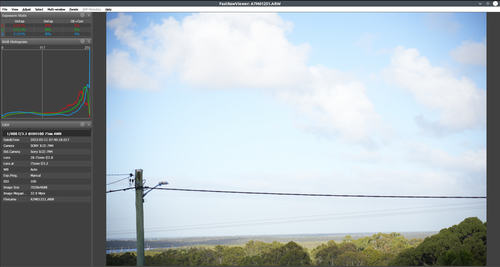For some reason this constant implication, that science and the "real world" are separate entities needing to be related somehow, is bothering me.
For me, the degree of exposure is Hm lux-seconds and is equal to a constant x average scene luminance x shutter time / (f-number squared).
If my exposure turns out wrong, then one of those three variables was wrong, duh, and most if not all of the verbiage in this thread changes that not a whit ...
... in other words, estimate the light correctly, set the (shutter time / (f-number squared)) correctly and Bob's yer uncle and Fanny's yer aunt.
Everything else, JPEGs, zebras, histograms, metering, EC, na-ni-na, revolves around that simplicity. Which is why I like my always-in-manual Sigma SD9 ...






